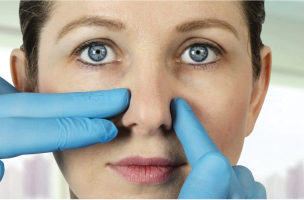
Unravelling the Factors Fuelling the Quest for Aesthetic Enhancement
By Dr Chris Oosthuizen, ENT Surgeon from Brisbane, Australia

The realm of facial plastic surgery has witnessed a remarkable surge in popularity over the past few decades. Increasingly, people around the world are seeking surgical interventions to alter their facial features and achieve an idealised appearance. The motivations behind this phenomenon are multifaceted and influenced by a combination of sociocultural, psychological, technological, and economic factors.
In this article, we will explore the various factors that fuel our desire for facial plastic surgery, shedding light on the underlying drivers behind this growing trend. Sociocultural Influences In a society heavily influenced by media, advertising, and celebrity culture, the concept of beauty has become highly standardised.
Unrealistic beauty standards perpetuated through social media platforms, television, and magazines have contributed significantly to the desire for facial plastic surgery. The pressure to attain perfection, often unattainable through natural means, has led individuals to turn to surgical interventions as a means of achieving their desired appearance.
The rise of “selfie culture” and the prevalence of photo-editing applications have created a culture of self-scrutiny and comparison. As individuals continually observe and assess their appearances through these distorted lenses, they may develop insecurities and an increased desire for facial modifications to fit perceived societal norms.
Psychological Factors
Underlying psychological factors play a crucial role in the quest for facial plastic surgery. Body dysmorphic disorder (BDD) is a psychological condition characterised by an obsessive preoccupation with perceived flaws in one’s appearance.
Individuals with BDD may perceive themselves as unattractive or deformed, and facial plastic surgery may be pursued as a way to alleviate their distress and improve self-esteem. However, surgical interventions may not address the root cause of the condition and may exacerbate psychological distress in some cases.
Additionally, societal pressures and the desire for social acceptance can contribute to the wish for facial alterations. Enhancing one’s appearance through surgery may be perceived as a means to boost self-confidence and improve social interactions.
Aging and the Pursuit of Youthfulness
As the world’s population ages, there is an increasing emphasis on maintaining a youthful appearance. The desire to counteract the effects of aging has fuelled the popularity of facial plastic surgery procedures, such as facelifts, dermal fillers, and Botox injections.
In a society that values youth and vitality, facial rejuvenation procedures have become widely accepted as a way to regain a more youthful appearance and preserve one’s self-image.
Advancements in Technology and Techniques
The advancements in medical technology and surgical techniques have significantly contributed to the allure of facial plastic surgery. Modern procedures have become less invasive, leading to reduced downtime and shorter recovery periods.
Non-surgical procedures, such as laser treatments and injectables, have become more accessible and affordable, attracting individuals seeking quick fixes for their aesthetic concerns.
Furthermore, the rise of virtual consultations and digital imaging technologies has allowed prospective patients to visualise the potential outcomes of their surgery, increasing their confidence and motivation to undergo the procedure.
Economic Factors and Accessibility
The affordability and accessibility of facial plastic surgery have played a role in the increasing demand for these procedures. In some regions, the cost of surgical interventions has become more competitive, making it feasible for a broader range of individuals to consider these procedures.
Additionally, the popularity of medical tourism has facilitated access to cosmetic surgery for those seeking cost-effective options.
Media and Celebrity Influence
Celebrities and public figures often set beauty standards for society. As these influential figures publicly undergo facial enhancements, it can normalise the idea of cosmetic procedures for their followers. The media’s portrayal of these interventions as commonplace and almost routine can contribute to the desire for facial plastic surgery among the general population.
Cultural and Ethnic Considerations
In certain cultures, specific facial features may be considered more desirable than others. For example, the desire for more prominent cheekbones, a slimmer nose, or larger eyes may be influenced by cultural beauty ideals. As globalisation and cultural exchange continue to increase, these beauty standards can transcend borders, leading to a homogenisation of preferences and a more widespread desire for specific facial features.
The desire for facial plastic surgery is a complex interplay of sociocultural, psychological, technological, and economic factors. Unrealistic beauty standards, media influence, psychological conditions, the pursuit of youthfulness, advancements in technology, economic factors, and cultural considerations all contribute to the growing trend of aesthetic enhancement.
While facial plastic surgery can undoubtedly offer transformative results for some individuals, it is essential for both patients and surgeons to carefully consider the motivations behind the desire for surgery and engage in open and honest discussions to ensure realistic expectations and satisfactory outcomes.


 (07) 3202 4636
(07) 3202 4636